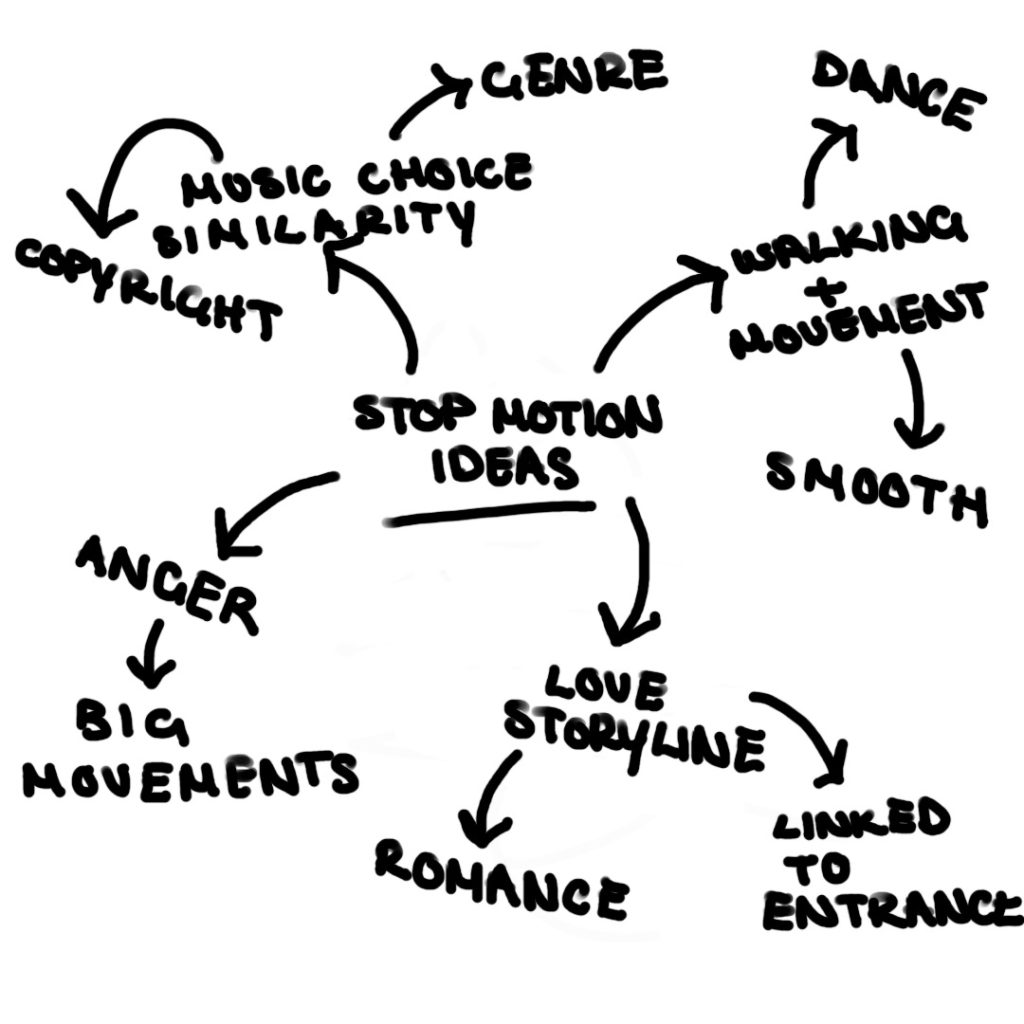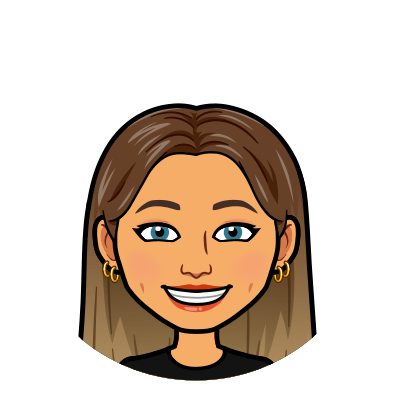Teamworking Evidence
This task aimed to create a stop-motion animation using miniature mannequins within a small team. This would allow the group to understand how stop motion works in preparation for our final animation for our energy drink brands.
Due to my absence from the lecture where the task initially took place, myself and Caroline were invited to join Amber and Lucy, who had formed a group for the same reason. The team met in the library, where Lucy had booked a room to complete the task.
During the initial steps of the task, we each suggested ideas for a short storyline we wanted to follow in the stop-motion animation. Lucy captured all of our ideas in a mindmap.

Stop Animation
Once all four team members agreed on the idea, we began capturing the movements of the artist’s mannequins.
In the 10-second animation, The two figures come together and begin dancing with one another. The dancing stops with one mannequin walking out of the frame, prompting the other to follow. They are both seen entering the frame again, with one having their arm on the other’s back. They walk to the edge of the table and appear to fall off. They both seem to be climbing back onto the table in the final frames.
Reflection
Due to completing the task using our own time, we all appreciated the value of teamwork more than we may have during the class. We worked well together with clear and constant communication throughout, which I’m sure the rest of the group would agree with.
We each had individual positions in the group, Lucy and I positioned the figures in between each frame, with Caroline capturing each moment. Caroline, the photographer, naturally led the group and assisted Lucy and me in placing the figures and directing the group through the story.
Creating the movements of the figures took a lot of work as they would not stay in position. There were many times when Lucy and I would have to hold up parts of the figure to keep them in the correct place for the images. This meant some images had our hands or faces, making Amber’s job very difficult. Nevertheless, we both worked collaboratory with Caroline as she had the view of the lens and knew what appeared best to achieve a somewhat smooth animation.
Amber had the tedious task of creating the animation using 120 images Caroline had taken; there were 150 images overall, so there was plenty to choose from. Adhering to the task’s requirements, Amber ensured all 120 images amounted to a 10-second animation.
Improvements
Upon reflection, there are many improvements the group could’ve made to improve the execution of the animation.
We lost the plot of the storyline we had in mind, which was agreed on initially. Looking from a viewer’s perspective, I find it challenging to understand the aim of the animation, especially since no audio was present.
Adding music could be a significant improvement that would allow the animation to excel. Using an audio file helps tell a story when no dialogue is involved. Doing this would enable the viewer to understand the mood of the animation.
Another improvement would be to use better props and pay more attention to small details. As stated in the reflection, there was a struggle to keep the positions of the models in place, which was apparent when the animation was put together. The primary issue was in the positioning of the hands; they were constantly losing contact which lowered the effect of the animation.
